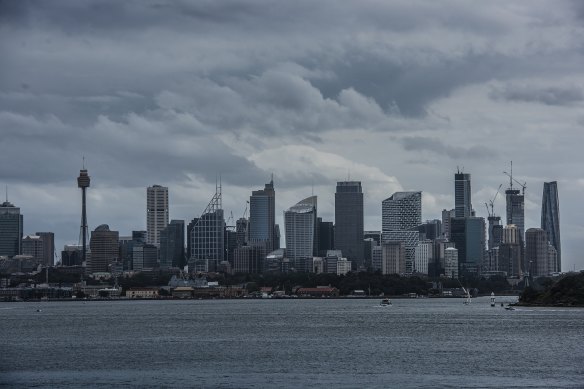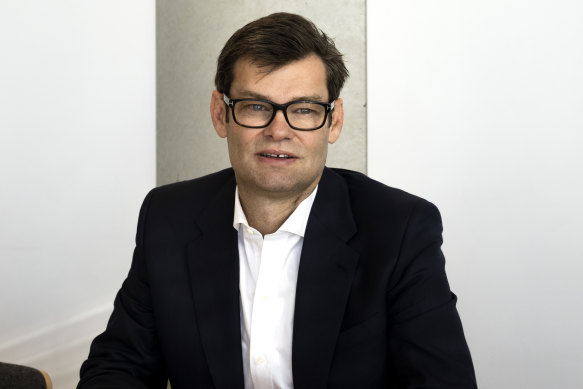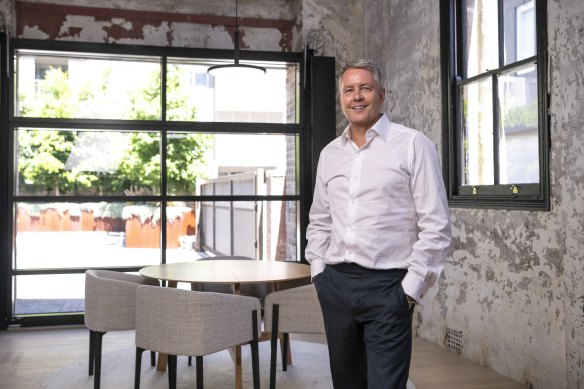This was published 1 year ago
Property chiefs see green shoots despite tough year ahead
Leading property executives are confident they have the right strategies in place to tackle what they forecast will be another challenging year for office, retail and industrial properties.
A focus on so-called alternative assets, including healthcare, student accommodation, build-to-rent, as well as marinas, pubs and agriculture, will be the main game for the sector in 2024.
The move to funds management, and the creation of unlisted funds that will own these assets, is also likely to gain momentum.

Cloudy future: the barometer is falling for office tower values.Credit: Steven Siewert
In a busy week of annual general meetings, chief executives of a range of real estate investment trusts all said 2023 had been tough and predicted that while there are signs of improvements, they will have to be even more vigilant on the balance sheet in the coming 12 months.
The CEOs said they expected disruption and volatility in global real estate markets to continue in 2024.
The annual general meeting season, where shareholders get to meet corporate bosses and vote on their pay, was also marked by a series of newcomers, as the old guard of CEOs take their leave.
New Mirvac boss Campbell Hanan said in his inaugural CEO speech that he believed there was an “incredibly exciting future ahead” for the company. Hanan replaced long-time CEO Susan Llyod-Hurwitz in March.
Hanan told the audience that looking to the 2024 financial year and beyond, the group would focus on key areas including retaining balance sheet flexibility and improving the cash flow resilience of its investment portfolio by increasing its exposure to living sectors and Sydney-based industrial property.
At Lendlease, the remuneration report received a strike amid shareholder concern about executive pay and the weaker underlying conditions for the development business.
Chairman Michael Ullmer said the board shared security holders’ disappointment with the company’s recent financial performance. Lendlease reported a statutory loss after tax of $232 million for the 2023 financial year.
“Apart from health and safety, simplifying the business and restoring Lendlease’s return on equity to our 8-10 per cent target range from 2024 is our most important priority,” Ullmer told the audience. The nonbinding vote against the report was 59.91 per cent, below the 75 per cent required threshold.
In the past year, the global property giant has moved further into funds management and reviewed its development pipeline to balance the short, medium, and long-term projects.
That drove its decision with Google to mutually end the $20 billion development agreements in the San Francisco Bay area.

Mirvac CEO Campbell Hanan.Credit: Louise Kennerley AFR
“In construction, our capability continues to play a critical role in the securing of new work, and the delivery of our urban projects and critical government infrastructure – including for long-term partners such as the Australian Department of Defence,” chief executive Tony Lombardo said.
He added that Lendlease would keep decreasing its exposure to the office market.
“The ongoing instability from inflationary and interest rate pressures, the disruption to global supply chains, and the residual impacts of the pandemic on our industry, has negatively impacted the markets in which we operate,” he said. “To put it simply, many global markets slowed dramatically.”
Its peer, Charter Hall is also boosting its funds management core with group funds under management growing 9.4 per cent for the year to $87.4 billion, driven primarily by property funds under management growth of 9.5 per cent, or $6.2 billion to $71.9 billion.
David Harrison, Charter Hall’s chief executive also said the office market was challenging.
“In office, we also see passing rents sitting below market rents; however, this is variable by submarket,” Harrison said.
“A lot of debate exists around the future of office markets, however, as with other parts of Asia, Australian office markets are expected to see a bifurcation of tenant demand toward modern or modernised office towers in core locations.”
He said Charter Hall would focus on having the largest modern office portfolio in Australia. To upgrade the portfolio, the company will sell assets, after selling $1.3 billion of assets over the past seven years
On the industrial front, Goodman escaped a second strike on its remuneration report.
Greg Goodman, co-founder and chief executive, said the focus would be on developing data centres across the country.
“Data centres are measured in power, rather than square metres, and Goodman has delivered 0.6 gigawatts of powered sites,” Goodman said.
“One of the many advantages we have in this space, is our significant land bank around the world, where we’ve got options for industrial development, or in specific cases where we can get the power and the planning, data centres.”

Greg Goodman is the founder and chief executive of property giant Goodman Group.Credit: Rhett Wyman
Data centres are currently about 25 per cent of Goodman’s work in progress, and there’s opportunity in its major markets around the world.
“We expect to develop this existing power bank over the next seven to 10 years,” he said.
The Business Briefing newsletter delivers major stories, exclusive coverage and expert opinion. Sign up to get it every weekday morning.